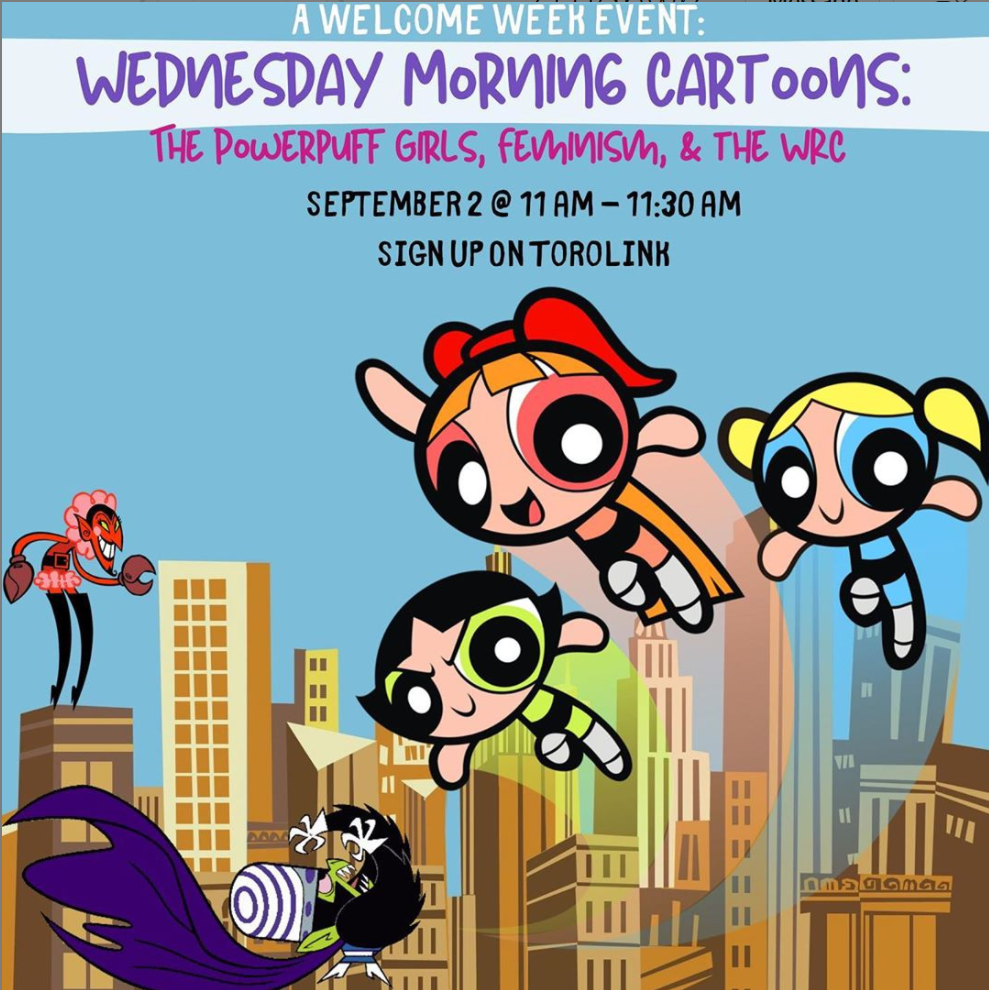By Darlene Maes
Arts & Entertainment co-editor
Kamala Harris. Elizabeth Warren. Sonia Sotomayor.
Patrisse Cullors, Alicia Garza. Opal Tometi.
And Blossom, Bubbles and Buttercup?
OK, so the three cartoon kindergarten superheroines from the animated show the “Powerpuff Girls,” might not deserve the same strong, powerful woman status as those six women, who include presidential and vice-presidential candidates, a supreme court justice and the three creators of Black Lives Matter.
But don’t sell these three pint-sized powerhouses short in terms of being feminists , or at least opening a conversation up about empowerment and how even animated depictions of women can work for, or against them.
That’s why the CSUDH Women’s Resource Center’s Welcome Week presentation was a virtual morning cartoon event. Held Wednesday at 11 a.m. viewers watched n episode from the Cartoon Network Show and then discussed the traits of feminism and representation within the episode.
“We wanted a light-hearted event for our welcome week, we know people can be zoomed out,” Alyeska Gutierrez, the WRC’s coordinator, said. “We definitely wanted to bring some joy on a Wednesday. We definitely wanted to connect this with the resource center on the concept of feminism and adding an intersectional lens on topics such as social inequality and representation.”
Within the 30-minute viewing and discussion, CSUDH students brought important observations on cartoon representation of women. Tanya Jimenez, 26, a graduate student, shared what stood out to her in the episode.
“The sexualization of the mayor’s secretary, Ms. Bellum and how they don’t show her face throughout the whole show,” Jimenez said. “But I can also see how this show can be very empowering to girls by having hero representations. Even these shows have their positives and negatives aspects.”
Paola Cebreros, 22, a psychology major, mentioned other cartoons that included representations of women related to side or supporting roles.
. “I remember watching a show called, ‘The Winx Club’, I really enjoyed watching this when I was younger,” Cebreros said. “ But going with how women are secondary characters I think of a show called ‘Phineas and Ferb,’ the sister Candice is gaslighted through the whole show. She is always seen as overreacting.”
Coordinator Gutierrez responded with her observation about Cebreros’ response.
“As little kids, we don’t really think about the messages these shows are putting,” she said. But now we see things like books illustrating hair love and representation and it is a new way to address what is being missed in shows.”
At the end of the discussion she informed attendees that the resource center is accessible with diverse services to provide assistance to those who need of support.
For additional information on upcoming events hosted by the Women’s Resource Center, visit here.
If you need assistance with any resources, more information can be found at csudh.edu/wrc

